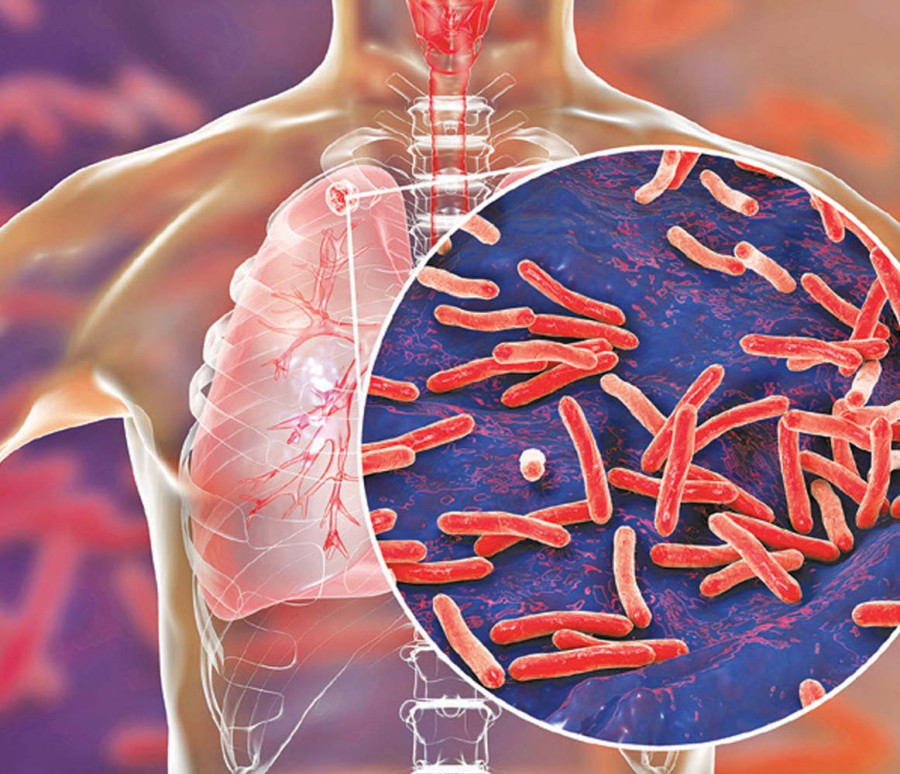Health
Health authorities clueless about over 31,000 tuberculosis patients
Urban slums, marginalised dwellings, monasteries and prisons deemed prone to TB spread.
Arjun Poudel
A few weeks ago, health workers from the National Tuberculosis Control Center in Bhaktapur went to a Musahar settlement in Bardibas Municipality of Mahottari district for surveillance of TB patients. Health workers screened 263 people in the settlement, and two were found infected with the deadly disease.
“Polymerase chain reaction reports of seven others also confirmed TB infection,” said Dr Prajwol Shrestha, director at the Center. “Final reports of others are yet to be out but there are hundreds of such settlements in the country that may have several patients infected with tuberculosis.”
Tuberculosis, or TB, is caused by Mycobacterium tuberculosis, which most often affects the lungs. When people with TB cough, sneeze or spit, they emit the TB germs into the air, and a person who inhales even a few of these germs can get infected.
Although the disease is curable and preventable, it still kills around 46 people daily in Nepal, or around 17,000 people in a year.
According to data provided by the Center, only 37,401 people tested positive for tuberculosis in the fiscal year 2021-22 out of an estimated 69,000 new cases. That means over 31,ooo infected patients are in the communities and health authorities failed to track them.
As health authorities failed to track thousands of infected people, their treatment has not started. When infected people are deprived of treatment, they could transmit the deadly virus to others.
Doctors say if left untreated, an infected patient from tuberculosis could pass the disease to 10 others in a year.
The National Prevalence Survey 2018-19 estimated that 117,000 people live with TB in Nepal.
According to Shrestha, Madhesh is the most affected province in the country, with the highest TB caseload of 9,123, followed by Bagmati Province’s 8,814 and Lumbini Province’s 7,702.
Case notification rate too is high in Madhesh Province, officials said.
An estimated 2,800 Nepalis develop multi-drug resistant tuberculosis every year, which is very high as per the population size of the country. But only 681 people were detected in the last fiscal year. The prevalence of multidrug-resistant tuberculosis has risen more than 15 percent, which was less than two percent in the past, according to the health ministry.
A combination of antibacterial medications are provided for a period of six to twelve months for the treatment of TB. The government provides free treatment to TB patients through 5,971 DOTS (directly observed treatment, short-course) centres. These centres are operated at state-run health facilities, community health facilities and some privately-owned health centres.
“Despite various efforts, we have not been able to track thousands of people infected with tuberculosis,” concedes Shrestha. “We carried out screening twice a year in urban slums, settlements of marginalised communities, prisons, monasteries and elderly homes, which are high-risk areas.”
According to the World Health Organisation’s Global Tuberculosis Report 2021, every year 10 million people fall ill with the disease. The UN health agency says around 1.5 million people die globally every year from TB, making it the world’s deadliest infectious disease.
The UN health body lists Nepal among 30 countries having high prevalence of multidrug-resistance tuberculosis.
Public health experts say Nepal does not make enough efforts to prevent the loss of lives due to the disease.
Nepal started providing TB treatment some 85 years ago, but it continues to remain one of the major public health burdens.
The country has committed to ending TB through the WHO END TB Strategy by 2035. But the National Prevalence Survey carried out in 2018-19 with technical and financial support from the UN health body showed that the country is “not on track’ to meet the target.
Experts say that Nepal will not be able to meet the target even in the next 125 years if intervention strategies are not changed.




 9.12°C Kathmandu
9.12°C Kathmandu













%20(1).jpg&w=300&height=200)
